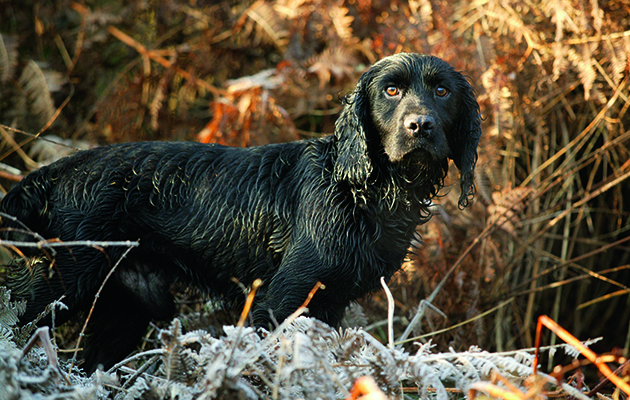Rescue gundogs prove their sporting worth
Sometimes you can find a quality working dog in the most unlikely of places, and it could well turn out to be the best of the lot, writes David Bezzant

Most fieldsports enthusiasts heed the advice of acquiring animals from proven working stock, whether they be gundogs, terriers or even ferrets. This is because knowledge of an animal’s ancestry provides an invaluable insight into its sporting potential and behavioural traits. However, I know of certain circumstances that resulted in this time- honoured advice being discarded, for the most worthy reasons when adopting rescue gundogs.
Take Pembrokeshire farmer Glyn, for example, who found an adult English springer spaniel in one of his fields. The lost dog possessed a spaniel’s typical dislike for being alone and, in desperation, had settled for the company of some bemused-looking Suffolk sheep.
Rescue gundogs
In the months that followed, nobody came forward to claim the dog, so Glyn adopted him and named him Fred, who now had more than 100 acres of picturesque farmland for his home. Glyn had two consuming passions — vintage tractors and shooting — and it seemed logical to have Fred accompany him when he was out with the gun. A lot depended on Fred’s working instinct because Glyn was an inexperienced handler. He had an unusual talent, particularly for a farmer, of inciting animals of any description to do exactly the opposite of what he wanted. His first outings were not very promising, since Fred continually absented himself.
Though disappointed, Glyn persevered and eventually Fred rewarded him by energetically working the farmer’s gorse- covered shooting ground. I doubt that dog or handler would have greatly impressed a professional observer.
Speedy replacement
In the years following World War II, Kenneth Dawson is a different case entirely. He had been educated in training gundogs from childhood and, as he approached middle age, emphatically stated that his chief interest in shooting, apart from filling the pot during those meatless days, was in working his dogs. He got far more pleasure out of some brilliant piece of canine cleverness than he did from taking an occasional good shot. He was understandably distressed when his trusted old Labrador suddenly went lame.
He was shooting three days a week, so he needed a replacement quickly. He heard of a man who, owing to ill health, could no longer cope with his dog. When he met the dog, Mr Dawson’s first impressions were not at all favourable. To start with, its looks were objectionable. He referred to it as a “light-boned, plain little toad with a terrible tail and a coat more like a pointer’s than a Labrador’s”. Added to this, the dog was 17 months old and, perhaps worst of all, it was untrained, and it was only because the owner was so desperate that he reluctantly agreed to take the dog.
After a few weeks, Mr Dawson was describing the same dog as an absolute wonder and congratulating himself for finding such a treasure. It earned its place in his heart by a display of hard work. He marvelled at the way it worked the tops of the Devonshire banks in a stoat-like fashion; took pleasure in its being under control when used for roughshooting; and was surprised by how rarely it failed on even the strongest of runners. So great did his admiration become for his new companion that he claimed it was the best Labrador he had ever owned.
Always on the lookout
Having to find a replacement dog at short notice was not a problem that the late O.T. Price would ever have faced because he was always on the lookout for a nice type of dog to add to his pack, whether this meant going to breeders, attending shows or visiting the dogs’ home. Mr Price worked terriers for more than 70 years, beginning in the late 1800s. He favoured a narrow eel-like terrier, which he could span with his hands.
When visiting a dogs’ home, a small terrier bitch caught his eye and he was able to acquire her for a donation of seven shillings and six pence. She proved to be — in his own words — “a nailer of a little worker”. When she grew older he made a gift of her to a professional huntsman.
In more recent times I encountered Benji, a Jack Russell, who, when his owner of eight years became too weak and frail to look after him, was adopted by a nursing home to perform the duty of resident pet-pal. The nursing home was in an idyllic country setting and the terrier took every opportunity to hunt in the surrounding fields and woods, assisted by his new friend Dipper, a golden retriever. Despite never having worked before, Benji frequently returned to the home, proudly carrying a rabbit he had caught. As I watched Benji on one of his hunting forays, I wished I had adopted him myself because he would have made a useful companion for my ferrets, many of which had also been rescued after being lost or abandoned by their owners.
I have always found it satisfying to watch rescued gundogs or ferrets enthusiastically perform the sporting task for which they were bred, and am convinced that any kindness shown towards such animals is amply rewarded by dedicated and dutiful service.








